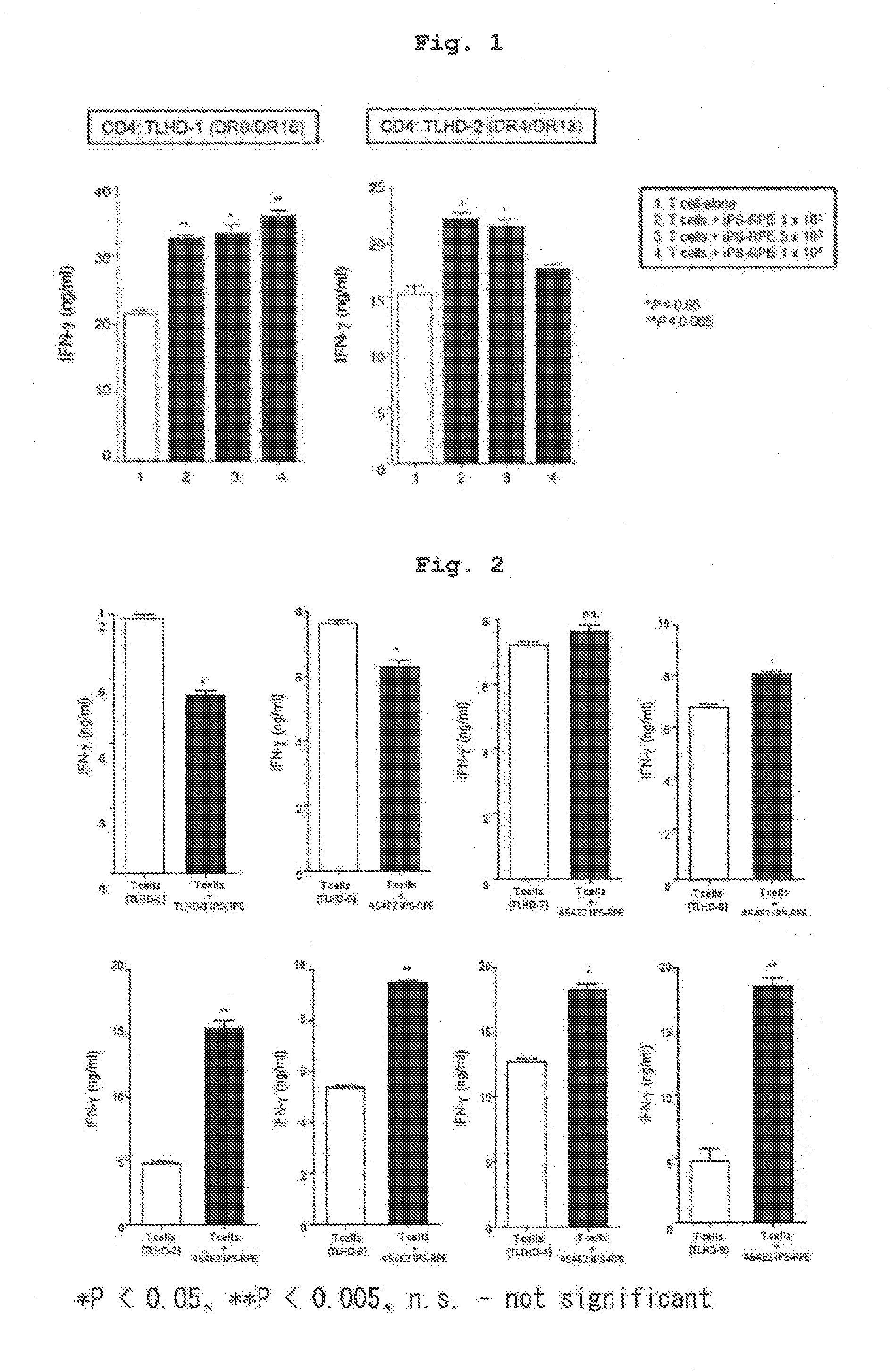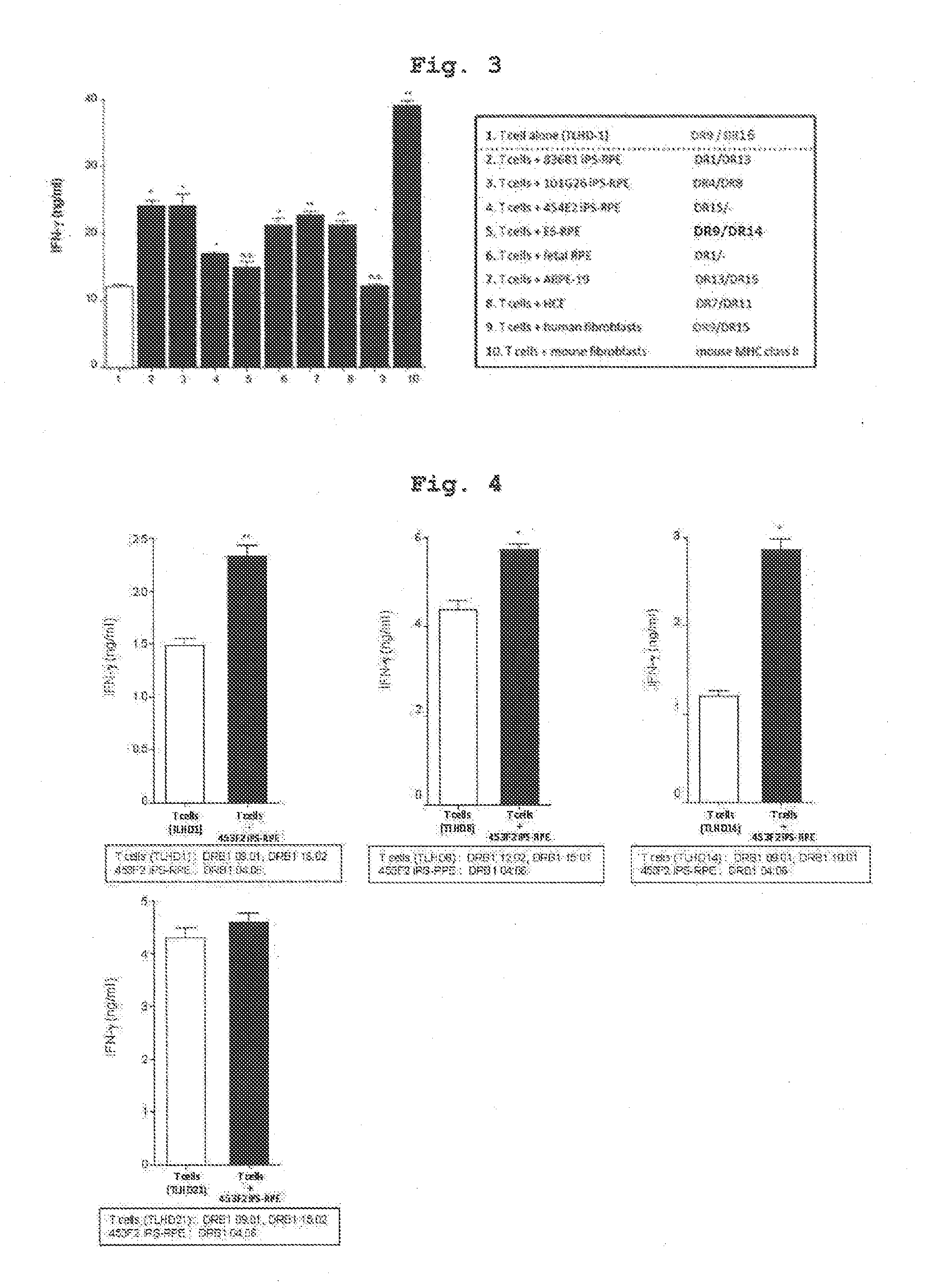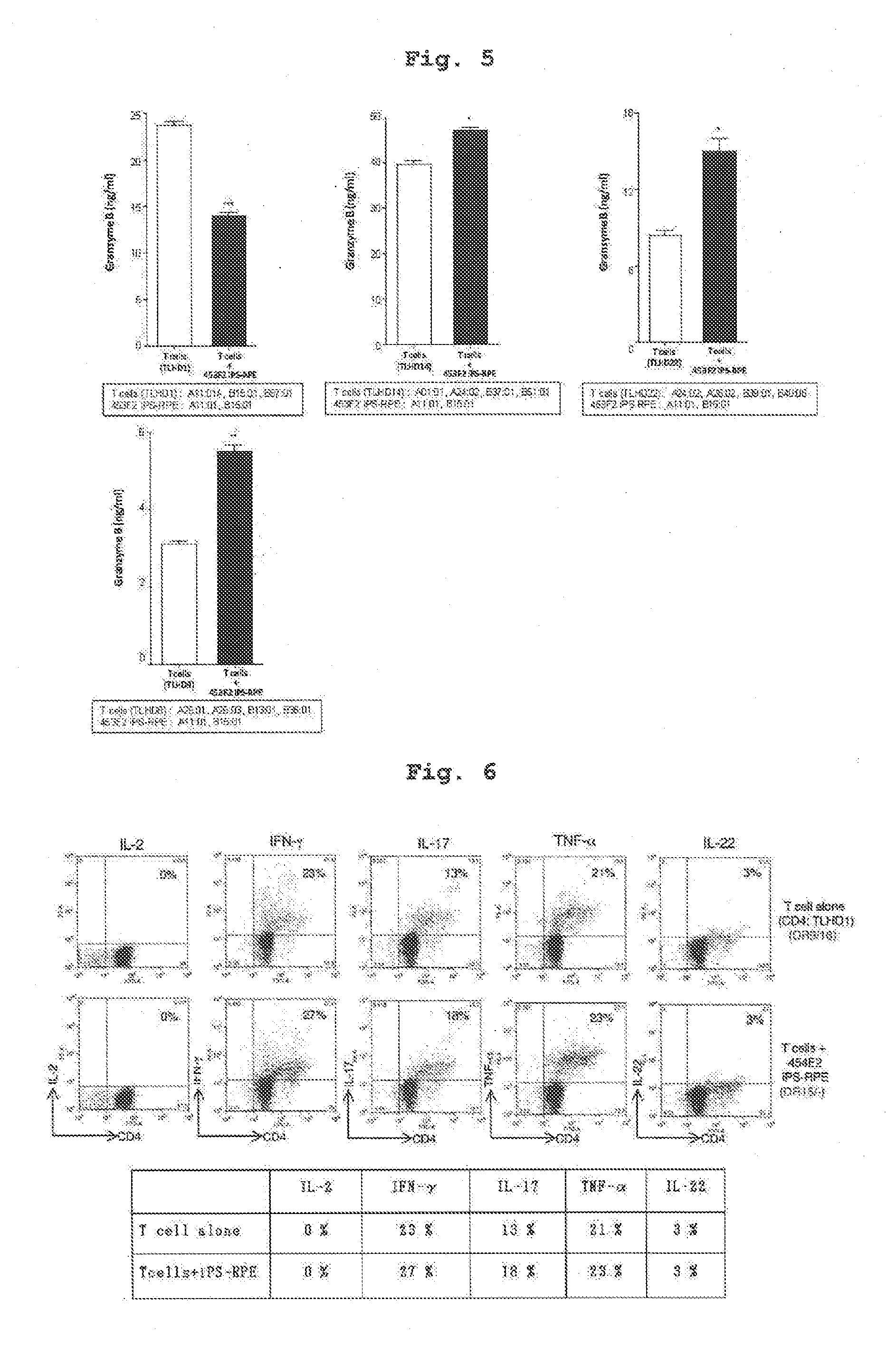Eye disease treatment agent, screening method therefor, and method for predicting rejection response associated with retinal pigment epithelial cell transplant
- Summary
- Abstract
- Description
- Claims
- Application Information
AI Technical Summary
Benefits of technology
Problems solved by technology
Method used
Image
Examples
preparation example 1
Preparation of Human iPS Cell-Derived RPE Cells
[0104]Using IPS cell line 454E2 or 453F2 (provided by Kyoto University) disclosed in Nature Methods 8, 409-412 2011 as iPS cells, and according to of the differentiation induction method described in J Cell Sci (2009)122: 3169-3179, 454E2-iPS cell-derived RPE cells and 453F2-iPS cell-derived RPE cells (both cells have homozygous genotype at HLA-A, -B, -DR3 gene loci) were prepared.
[0105]In addition, using, as iPS cell line, iPS cells established from human skin-derived fibroblast of a test subject name TLHD-1 according to the method described in Nature (2011) 474: 225-229 instead of 454E2 or 453F2, TLHD-1-iPS cell-derived RPE cells were prepared by a similar method.
preparation example 2
Preparation of Human T Cell Suspension
[0106]CD4 positive T cells and CD8 positive T cells were separated from human peripheral blood (test subject names; TLHD-1-TLHD-22) by using a MACS magnetic cell sorter, suspended in 100U / ml rhIL-2-containing RPMI culture medium (RPMI 1640 445 ml, FBS 50 ml, penicillin-streptomycin 5 ml) to prepare each cell suspension.
(Reference 1) HLA Typing
[0107]The results of HLA typing of the cells used in Examples 1-8 by a conventional method are shown in the following Table. The results of HLA typing of respective T cells of test subjects obtained in Preparation Example 2 are shown in Tables 1-1, 1-2, and the results of HLA typing of the human iPS-derived RPE cells of Preparation Example 1 and those induced from other iPS cells are shown in Table 2.
[0108]Relative to 454E2-iPS cell-derived RPE cells (homozygous at 3 gene loci of HLA-A, HLA-B, HLA-DR), the test subject names TLHD-10 and TLHD-21 had the same alleles in the genotype of 3 gene loci of HLA-A, H...
preparation example 3
Preparation of Monkey iPS Cell-Derived RPE Cells
[0110]iPS cells were established from the fibroblast derived from the skin of Macaca fascicularis according to the method described in Nature (2011) 474: 225-229 (GLISluse), and monkey iPS cell-derived RPE cells were prepared according to the differentiation induction method described in J Cell Sci (2009)122: 3169-3179 from each of normal monkeys (A, B) and a disease model monkey (C) prepared by forming a retinal photocoagulation spot in one eye by retinal photocoagulation procedure.
PUM
 Login to View More
Login to View More Abstract
Description
Claims
Application Information
 Login to View More
Login to View More - R&D
- Intellectual Property
- Life Sciences
- Materials
- Tech Scout
- Unparalleled Data Quality
- Higher Quality Content
- 60% Fewer Hallucinations
Browse by: Latest US Patents, China's latest patents, Technical Efficacy Thesaurus, Application Domain, Technology Topic, Popular Technical Reports.
© 2025 PatSnap. All rights reserved.Legal|Privacy policy|Modern Slavery Act Transparency Statement|Sitemap|About US| Contact US: help@patsnap.com



